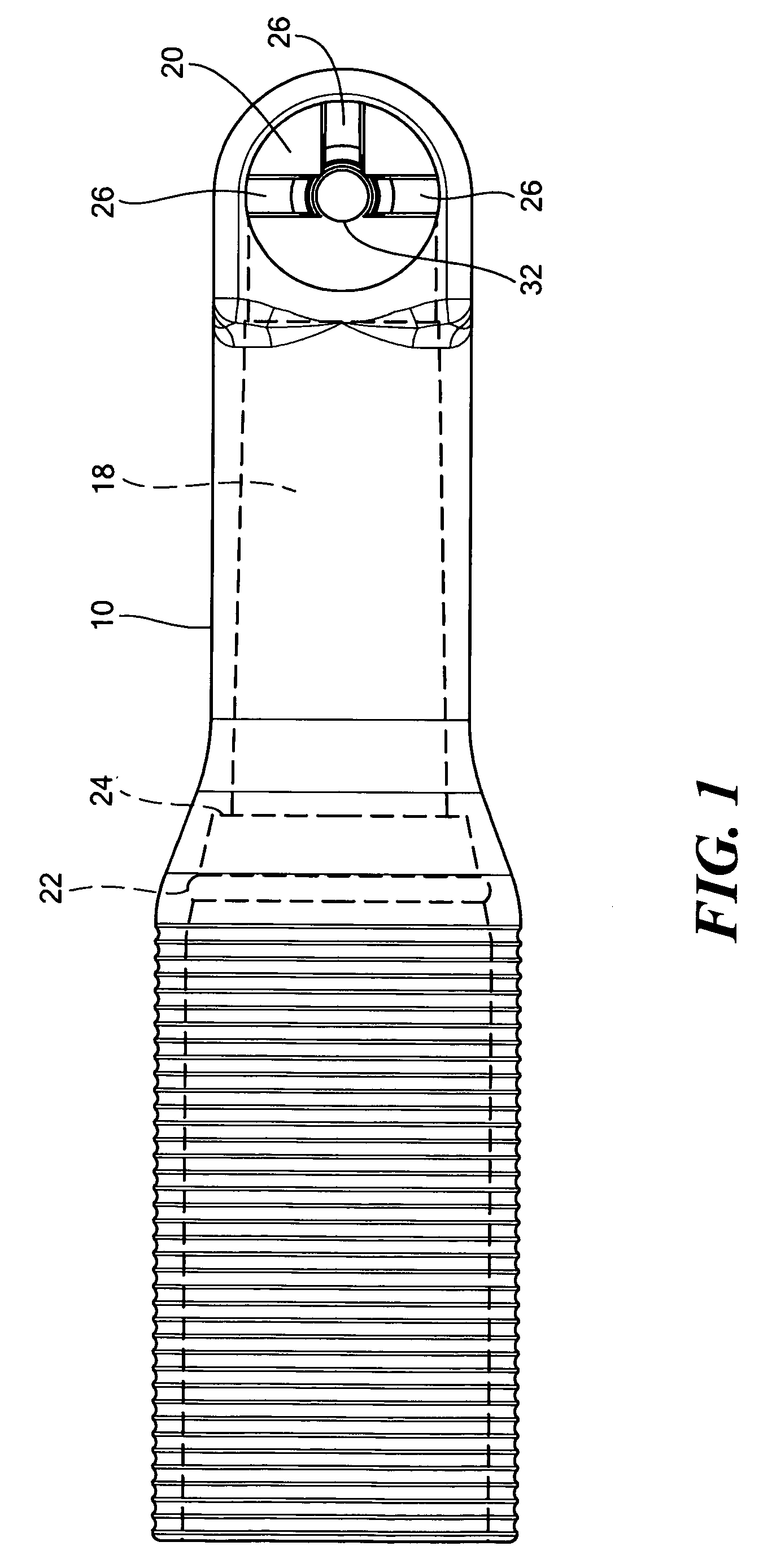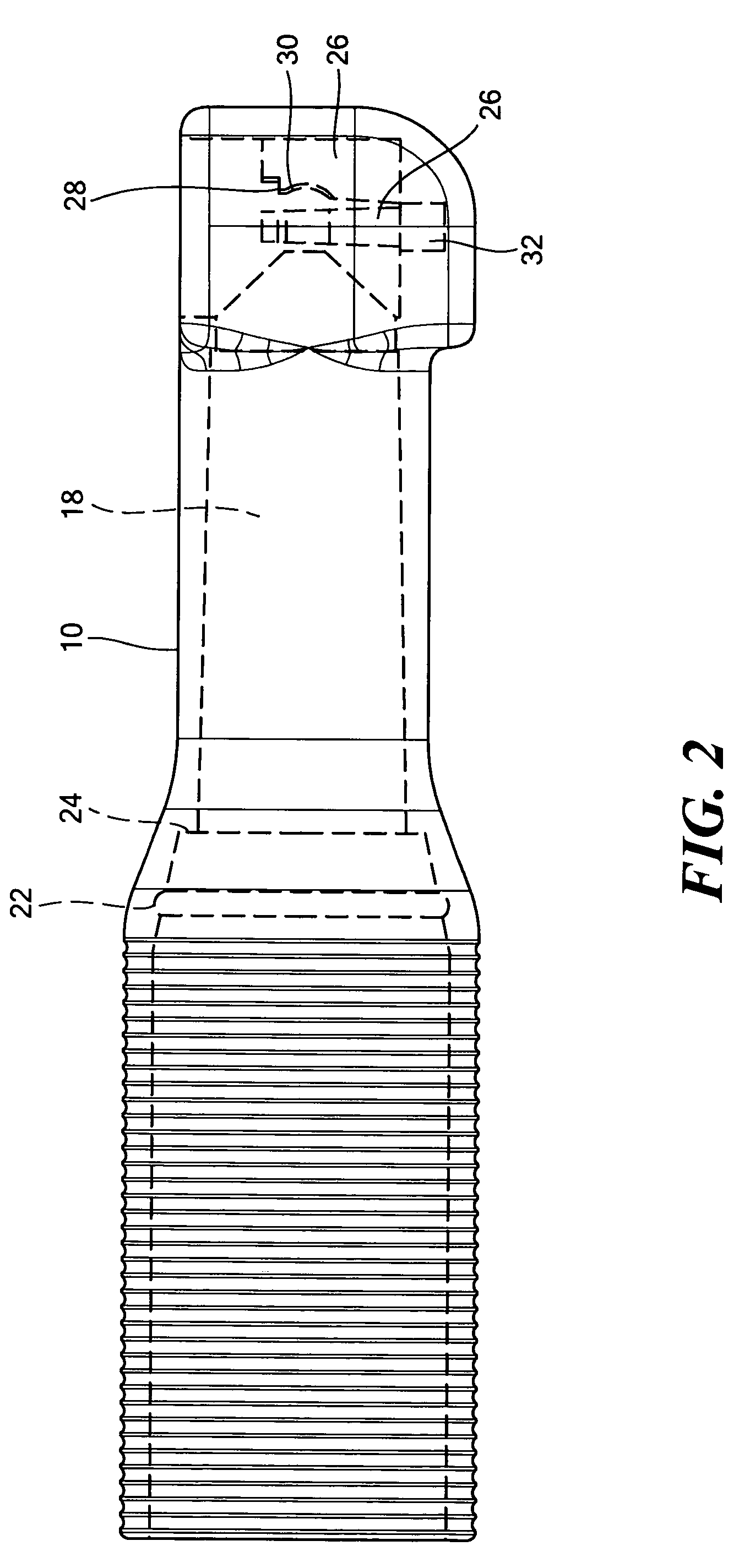Prophy angle
a technology of prophylaxis and angle, which is applied in the field of dental instruments, can solve the problems of affecting the prophylaxis effect,
- Summary
- Abstract
- Description
- Claims
- Application Information
AI Technical Summary
Problems solved by technology
Method used
Image
Examples
Embodiment Construction
[0021] In an exemplary embodiment, the present invention provides a dental prophylaxis angle having a singular housing 10, a drive shaft 12, a rotor 14, and a collar 16. FIGS. 1 and 2 illustrate the singular housing 10 as a one-piece element which defines a first bore 18 extending through a length of the housing 10. A second bore 20 is in communication with and extends from the first bore 18 at a substantially perpendicular angle. The housing 10 further defines an annular groove 22 circumscribing a portion of the first bore 18, and a housing shoulder 24 disposed about a portion of the first bore 18 where the first bore 18 decreases in diameter.
[0022] A plurality of rotor bearing elements 26 is radially positioned within the second bore 20. Each rotor bearing element 26 includes an upper bearing surface 28, as well as having a spherical recess 30 on a surface of the bearing element that is substantially perpendicular to the upper bearing surface 28. In addition, the housing 10 inclu...
PUM
 Login to View More
Login to View More Abstract
Description
Claims
Application Information
 Login to View More
Login to View More - R&D
- Intellectual Property
- Life Sciences
- Materials
- Tech Scout
- Unparalleled Data Quality
- Higher Quality Content
- 60% Fewer Hallucinations
Browse by: Latest US Patents, China's latest patents, Technical Efficacy Thesaurus, Application Domain, Technology Topic, Popular Technical Reports.
© 2025 PatSnap. All rights reserved.Legal|Privacy policy|Modern Slavery Act Transparency Statement|Sitemap|About US| Contact US: help@patsnap.com



